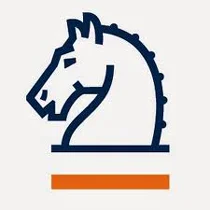دانلود ترجمه مقاله نوآوری زنجیره تامین پایدار و عملکرد بازار
| عنوان فارسی |
نوآوری زنجیره تامین پایدار و عملکرد بازار: نقش قابلیت های سنجش و نوآوری |
| عنوان انگلیسی |
Sustainable supply chain innovation and market performance: The role of sensing and innovation capabilities |
| کلمات کلیدی : |
قابلیتهای پویا؛ نوآوری؛ پایداری؛ بازار |
| درسهای مرتبط | مدیریت زنجیره تامین پایدار |
| تعداد صفحات مقاله انگلیسی : 9 | نشریه : ELSEVIER |
| سال انتشار : 2024 | تعداد رفرنس مقاله : 51 |
| فرمت مقاله انگلیسی : PDF | نوع مقاله : ISI |
|
پاورپوینت :
ندارد سفارش پاورپوینت این مقاله |
وضعیت ترجمه مقاله : انجام نشده است. |
1. مقدمه 2. چارچوب نظری 3. روش ها 4. نتایج 5. بحث و بررسی و نتیجهگیری

چکیده – مشارکت زنجیرههای تامین در ایجاد مزیتهای رقابتی میتواند محرک تغییر و نوآوری باشد، بهویژه با در نظر گرفتن نیاز کنونی به رویههای پایدار همسو با تقاضاهای بازار مصرفکننده. در این چارچوب، این مطالعه با هدف بررسی تأثیر قابلیتهای پویای سنجش بازار و نوآوری بر رویههای نوآوری زنجیره تامین پایدار و بر عملکرد بازار انجام شده است. برای این منظور، یک پیمایش با 137 متخصص برزیلی در مدیریت زنجیره تامین با استفاده از مدلسازی معادلات ساختاری انجام شد. نتایج حاکی از تاثیر مثبت قابلیتهای پویای سنجش بازار و نوآوری بر رویههای نوآوری زنجیره تامین پایدار و بر عملکرد بازار بود. این پژوهش مسیرهایی را برای اتخاذ یک دیدگاه نظری چندسطحی مبتنی بر کاوش قابلیتهای پویا همسو با اهداف بازاریابی نشان داد. مقدمه: سازمانها برای پیادهسازی رویههای پایدار با فشار از سوی ذینفعان مواجه هستند. در این راستا، مطالعات بهطور خاص بر نوآوری پایدار متمرکز شدهاند، با این فرض که نوآوری باید به دنبال ارائه مزیتهای رقابتی به سازمانها، ایجاد منافع زیستمحیطی و رفاه اجتماعی باشد (چیلو و همکاران، 2019). همچنین، علاقه فزایندهای در مقالات پژوهشی برای گسترش دامنه تحلیل نوآوری پایدار به تمامی ذینفعان، با نگاهی عمیقتر به اشتراکگذاری مسئولیت پیامدهای اجتماعی-زیستمحیطی بین سازمانهای مختلف، وجود دارد (زویرینگ و مولر، 2008). با در نظر گرفتن مسئولیت مشترک در قبال جریان مواد و اطلاعات و پیامدهای اجتماعی-زیستمحیطی، مشارکت ذینفعان زنجیرههای تامین در ایجاد مزیتهای رقابتی میتواند محرک تغییر و نوآوری در زنجیره تامین باشد (نیلسون و گورانشون، 2021)، بهویژه با در نظر گرفتن نیاز کنونی به پیکربندیهای چرخهای (گوویندان و همکاران، 2016). این امر بهویژه صادق است، زیرا سازمانها صرفاً موجودیتهای مستقلی نیستند که با یکدیگر رقابت میکنند، بلکه اعضای شبکههای بههمپیوستهای هستند که ممکن است ارزش ایجاد یا از بین ببرند (اندرسون و همکاران، 1994).
| ترجمه مقاله مرتبط با این مقاله | دانلود ترجمه مقاله نوآوری و زنجیره تامین پایدار |
The involvement of supply chains in the creation of competitive advantages can drive change and innovation, particularly when considering the current need for sustainable practices in line with the demands of the consumer market. In this context, this study aims to investigate the impact of the dynamic capabilities of market sensing and innovation on sustainable innovation practices in supply chains and on market performance. For this, a survey was performed with 137 Brazilian experts in supply chain management using Structural Equation Modeling. We found a positive impact of the dynamic capabilities of market sensing and innovation on sustainable innovation practices in supply chains and on market performance. The investigation indicated paths for the adoption of a multilevel theoretical perspective based on the exploration of dynamic capabilities in line with marketing objectives. Introduction: Organizations face pressure from stakeholders to implement sustainable practices. In this context, studies have focused particularly on sustainable innovation, based on the assumption that innovation should seek to provide competitive advantages to organizations, generate environmental benefits and social well-being (Cillo et al., 2019). There is also a growing interest in the literature in expanding the scope of the analysis of sustainable innovation to all stakeholders, looking deeper to sharing the responsibility for socio-environmental impacts between different organizations (Seuring and Müller, 2008). Considering co-responsibility for materials and information's flows and socio-environmental impacts, the involvement of the supply chains' stakeholders in the creation of competitive advantages can drive change and innovation (Nilsson and Göransson, 2021), particularly when considering the current need for circular configurations (Govindan et al., 2016). This is especially true since organizations are not simply autonomous entities competing against each other, but members of interconnected networks that may generate or destroy value (Anderson et al., 1994).





دیدگاهها
هیچ دیدگاهی برای این محصول نوشته نشده است.